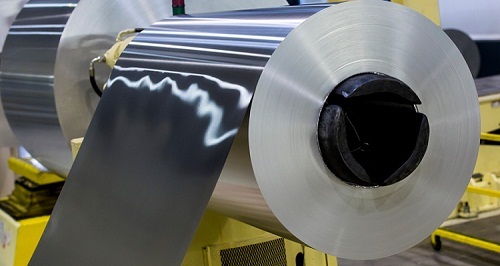Using aluminium for home construction
Contents |
Introduction
When building a home, the first essential step consists in selecting the right materials. There are a variety of options from which builders can choose. Each come with advantages and disadvantages. The key is to reconcile the prospective owner’s budget with their specific needs and desires. Apart from timber, steel, brick, glass, and concrete, aluminium can constitute a component of residential construction.
Physical characteristics
Aluminium is a silvery, malleable, and non-magnetic metal. The periodic system classifies it as the chemical element AI. Due to its high reactivity, the metal rarely occurs in pure form, but is found as a component of almost 300 other minerals. Aluminium is used in most industrial sectors.
Pros
On contact with air, it forms a thin layer of aluminium oxide which prevents progressive oxidation. As a result, the material becomes ‘passive’, meaning it is less affected by environmental influences. The main benefit of this lies in its resistance to corrosion. Products manufactured from aluminium can be exposed to extreme weather conditions and humidity without deteriorating.
It also has low density and good electrical conductivity. Generally speaking, it conducts about 60% of the power which can be transferred via copper through the same cross-section. But because of the difference in density it can carry twice as much current as a similar mass of copper. Hence, aluminium-based wires are about 80% less expensive.
Applications in residential buildings
The characteristics outlined above can make aluminium a valuable component for housing.
Doors
External doors can be manufactured from timber, glass, uPVC (unplasticised polyvinyl chloride) and so on, but also from aluminium. The latter gives high durability and low maintenance.
In contrast to timber or glass doors, aluminium doors remain resistant to rain, snow, and physical impact. They also require little cleaning or polishing. However, on average, aluminium doors cost three times more than some less robust alternatives. Moreover, builders should consider whether the material’s metallic colouring blends with the overall aesthetic appeal they wish to achieve.
Windows
Aluminium can also be practical for window framing. Compared to timber or uPVC, it can exceed efficiency standards and reduce heat gain and loss by up to 60%. Modern windows are built by using thermal-break technology, which means that insulated barriers between inner and outer layers of aluminium help to slow down the transmittance of heat and cold. In the long run, this leads to substantial energy savings. Moreover, aluminium windows can be considerably lower in price than wooden or synthetic alternatives.
Siding
Aluminium not only serves to seal windows, but also to insulate the outer walls of the house. In comparison with vinyl sidings, it reduces the cost of heating and cooling when combined with thermal-break technology. Thanks to its lightness, it can be installed easily, saving cost-intensive labour. This option enhances the durability of houses in coastal areas, where buildings have to withstand a high degree of humidity. While timber sidings are likely to absorb water, aluminium will neither swell, rot, nor accumulate mould.
Cons
Alongside these advantages, there are few downsides to be considered. Aluminium dents or scratches more easily than other materials and may assume a dull colour over time. These drawbacks mainly affect outward appearance and have no impact on efficacy.
Due to its high conductivity, the soft metal has been used for wiring within residential buildings. The construction of aluminium-wired housing was particularly popular during the 1960s and 1970s. This method has since proven problematic in numerous respects. Whereas low density ensures a higher rate of conduction, it also entails a greater risk of overheating and even fire. Consequently, many old houses have now been rewired to ensure compliance with contemporary security standards. Modern homes commonly use copper wires insulated by non-metallic sheaths of PVC.
The process of manufacturing aluminium is also relatively energy intensive.
Related articles on Design Buildings Wiki
Featured articles and news
A change to adoptive architecture
Effects of global weather warming on architectural detailing, material choice and human interaction.
How big is the problem and what can we do to mitigate the effects?
Overheating guidance and tools for building designers
A number of cool guides to help with the heat.
The UK's Modern Industrial Strategy: A 10 year plan
Previous consultation criticism, current key elements and general support with some persisting reservations.
Building Safety Regulator reforms
New roles, new staff and a new fast track service pave the way for a single construction regulator.
Architectural Technologist CPDs and Communications
CIAT CPD… and how you can do it!
Cooling centres and cool spaces
Managing extreme heat in cities by directing the public to places for heat stress relief and water sources.
Winter gardens: A brief history and warm variations
Extending the season with glass in different forms and terms.
Restoring Great Yarmouth's Winter Gardens
Transforming one of the least sustainable constructions imaginable.
Construction Skills Mission Board launch sector drive
Newly formed government and industry collaboration set strategy for recruiting an additional 100,000 construction workers a year.
New Architects Code comes into effect in September 2025
ARB Architects Code of Conduct and Practice available with ongoing consultation regarding guidance.
Welsh Skills Body (Medr) launches ambitious plan
The new skills body brings together funding and regulation of tertiary education and research for the devolved nation.
Paul Gandy FCIOB announced as next CIOB President
Former Tilbury Douglas CEO takes helm.
UK Infrastructure: A 10 Year Strategy. In brief with reactions
With the National Infrastructure and Service Transformation Authority (NISTA).
Ebenezer Howard: inventor of the garden city. Book review.
Airtightness Topic Guide BSRIA TG 27/2025
Explaining the basics of airtightness, what it is, why it's important, when it's required and how it's carried out.






















